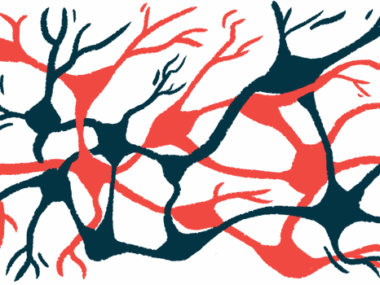SMA mice show structural, cellular, and functional defects in cerebellum
Researchers call for more research in regions beyond the spinal cord
Written by |

Decreased levels of the survival motor neuron (SMN) protein — missing or present in low levels in spinal muscular atrophy (SMA) — can cause defects in the structure and function of a brain’s cerebellum. This can result in difficulties with motor control and affect the ability to coordinate movement.
“Our findings join a growing body of research that supports the notion of SMA as a multi-system disease, with many relevant defects beyond just the lower motor neuron in the spinal cord,” the researchers wrote in “Cerebellar structural, astrocytic, and neuronal abnormalities in the SMNΔ7 mouse model of spinal muscular atrophy,” which was published in Brain Pathology.
SMA is mainly caused by mutations in the SMN1 gene, which provides instructions for making SMN. As a result, little or none is produced, leading to the progressive loss of motor neurons, the specialized nerve cells that control voluntary movements.
Knowledge about the specific defects caused by SMN deficiency across types of cells, including those in the brain, is still limited. Recent studies suggest SMA affects multiple body systems, not just motor neurons and their associated circuits.
There’s evidence of nerve cell degeneration in several brain regions, including the cerebellum, located in the back and inferior part of the brain. Although critical for motor function, cerebellar defects related to SMA have been poorly researched, leading scientists in the U.S. to study an SMA mouse model to assess disease-related effects on the cerebellum’s structure and function. The mice, which are widely used to study SMA-related mechanisms, have a median survival of 12 days and show loss of muscle strength shortly after birth.
Cerebellums in SMA mice, healthy mice
Compared to healthy mice, SMA mice had significantly smaller brains, particularly the cerebellum. Plus, SMN levels were significantly decreased in the cerebellum and spinal cord of SMA mice versus healthy mice.
The cerebellum of SMA mice also showed a disruption in nerve fiber connectivity, which was less organized in pathways arising from other brain regions to the cerebellum and from the cerebellum to other brain regions. The connections between different cerebellar regions were also affected.
The cerebellum has an intricate layer organization and is divided anatomically into lobules. In SMA mice, the researchers identified structural abnormalities, particularly differences in the thickness of cerebellar layers in some lobules. This suggests “developmental [layer formation] is affected by SMA, and … could be another contributor to losses in volume,” the researchers wrote.
Purkinje cells are a nerve cell in the cerebellum that modulate the development of cerebellar circuitry. In SMA mice, these cells’ number and area were significantly lower than healthy mice. Specifically, posterior lobules of the cerebellum were significantly smaller and had fewer Purkinje cells, suggesting their degeneration may contribute to structural abnormalities.
Glial cells, particularly astrocytes – cells of the nervous system that support neuronal function — play a critical role in motor neuron dysfunction. Astrogliosis, a form of astrocyte activation in response to damage, has been seen in SMA mice and patients.
In this study, astrocyte integrity was reduced and reactive astrogliosis was seen in several cerebellum regions in SMA mice, compared to healthy mice. This suggests “SMN deficiency in … the astrocytes that surround [Purkinje cells] in the cerebellum may accelerate [Purkinje cells’] neurodegeneration,” the researchers wrote.
Comparing the activity of neurons in the deep cerebellar nuclei — a part of the cerebellum that projects to other brain regions and the spinal cord —in SMA mice and healthy mice showed SMA neurons were half as likely to exhibit spontaneous activity, and at half the speed. This indicates structural and cellular defects impair the cerebellum’s functional output.
“Our study suggests that the disruption of [cerebellar] pathways, selective neurodegeneration, and reactive gliosis may alter the output of the cerebellum and disrupt fine-tuned and precise motor function in SMA patients,” the researchers wrote, adding these “SMA [disease-causing mechanisms] in the cerebellum may contribute to the persistent [symptoms] that continue to be observed in treated SMA patients.”
More research in regions beyond the spinal cord, including the cerebellum, may reveal new targets for treating persistent symptoms, they said.







